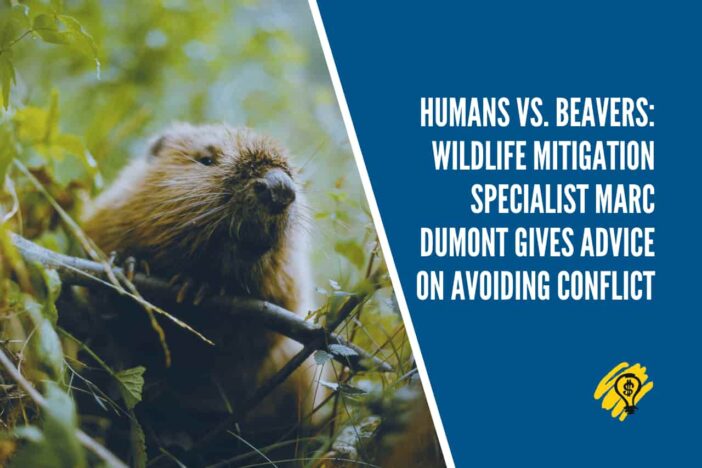While beavers provide many environmental benefits to their ecosystem, that hasn’t prevented a collision between the world’s second-largest rodent and their Canadian neighbours.
Beaver dams are well-known for mitigating the effects of floods and droughts. However, their dams sometimes have the opposite effect. In developing their habitat, beavers remove and damage trees, sometimes blocking watercourses that can cause excessive flooding. Beavers may also cause damage to trees and vegetation on property belonging to humans.
As a fur-bearing animal, the beaver is protected under provincial and federal law. However, people are allowed to shoot a beaver on their own property and allow private landowners to destroy a nuisance animal if the animal is damaging their property.
Conflicts between humans and beavers are common, and often lead to unfortunate outcomes, said Marc Dumont, an Alberta-based entrepreneur specializing in beaver mitigation and environmental sustainability.
“There are plenty of news stories out there talking about the damage that beavers cause, but the reality is that they’re only trying to adapt to a world that is changing around them as a result of human intervention,” said Dumont, who is currently enrolled at the U.S.-based Beaver Institute.
“What’s disappointing to see, however, is that people are turning to killing or even attempting to eradicate beavers. People fail to realize that they hold real significance in supporting their ecosystems. Killing them is rarely the right course of action.”
Nearly driven to extinction by the fur trade, the prevalence of beavers has rebounded in North America and Europe. Just a few months ago, a beaver was spotted walking through St. Paul Minnesota highlighting how much they have reintegrated into the environment.
Far from Dumont’s home in St. Paul, Alberta, we see an example of an extreme approach to beaver removal in a 2021 article published by CBC.ca. According to the article, wildlife advocates wanted the City of Ottawa to stop killing beavers as a means of managing conflicts between rodents and landowners.
Wildlife Centre President Donna DuBreuil said at the time that the organization had lost its patience with the city and found they weren’t open to alternative methods.
“Essentially, the city seems addicted to killing beavers,” DuBreuil said in the article. “There’s no other species that are more important to maintaining wetlands and keeping our watershed healthy than beavers.”
Alternative measures to handle potential beaver-related issues include using water flow devices and exclusion devices, and generally making property unappealing to beavers, Dumont said.
“There are smart ways to address these conflicts that allow beavers to do what they do best — keep the ecosystem healthy for all of us,” Dumont said.
While beavers can cause damage to infrastructure and trees — and even cause flooding in some circumstances — they also offer great benefits to their environment. Beavers create wetland habitats for other species by constructing dams and creating ponds. They foster biodiversity by removing trees and flooding lands, allowing plant diversity to grow.
Beaver dams and beaver ponds can also reduce soil erosion and retain sediment, acting as a filter for pollutants, Dumont said. These are only some of the benefits beavers provide to the ecosystem.
“I understand that for a farmer or landowner, beavers can seem like a real nuisance. But I don’t believe the solution to the problem is to resort to killing before other options are explored,” said Dumont. “Killing is only a short-term, costly option that can lead to the loss of important wetlands and biodiversity. More efforts to work with experts to find alternative solutions could lead to long-term solutions that benefit humans, beavers and countless other animal species and ecosystems.



